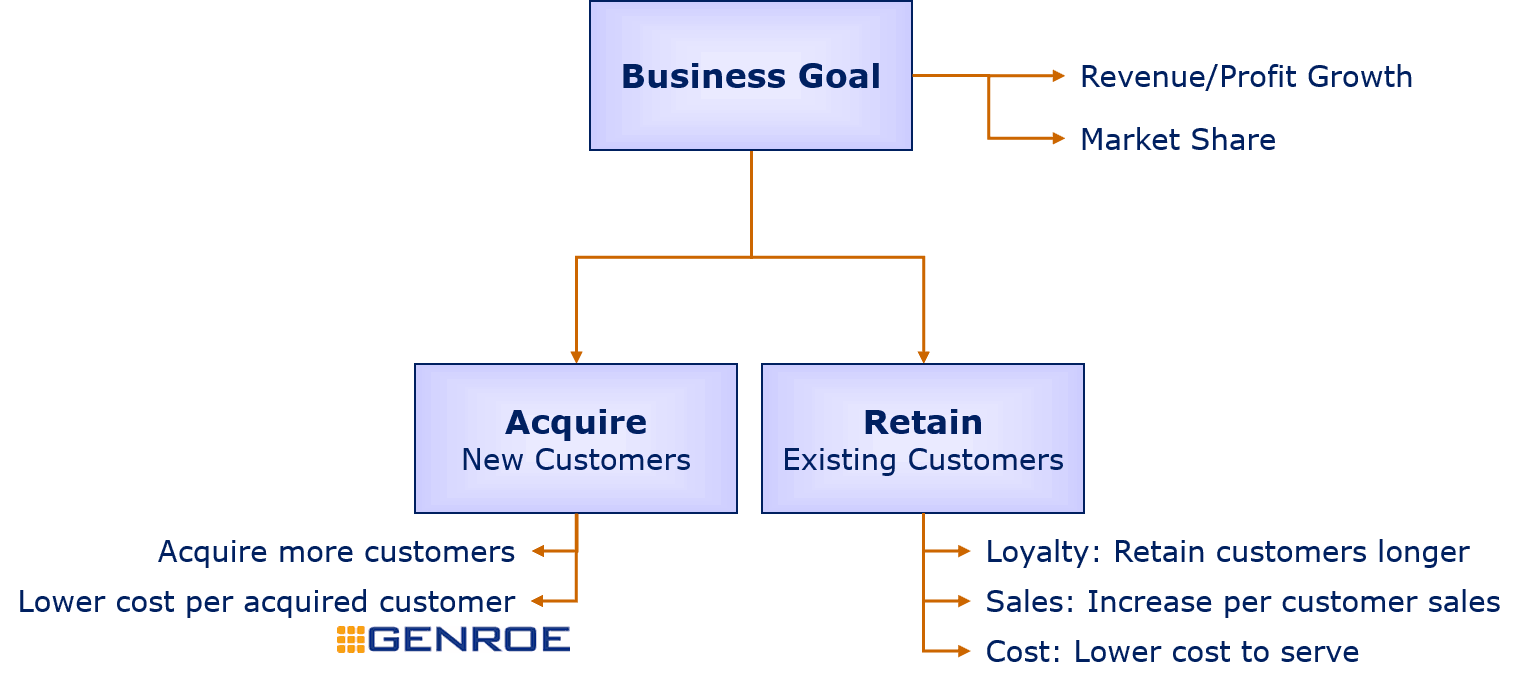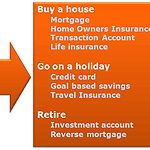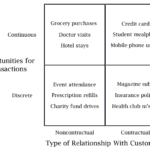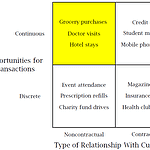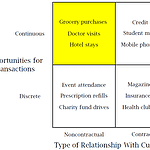I am often asked,
What is the best way to develop and implement strategies to increase customer value?
From a customer perspective, there are only two ways to drive business value: Customer Acquisition and Customer Retention.
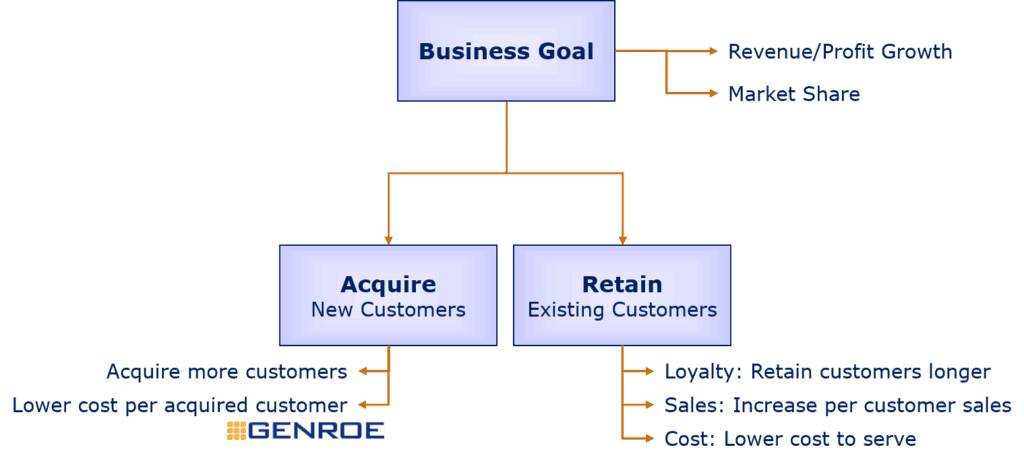
Acquiring new customers is the focus of other posts.
In this post we’ll focus on increasing the value of our existing customers – in this we have a limited number of strategies we can apply.
Assuming you can’t change the fundamentals of what you deliver, .e.g you can’t change gross margin, there are only three strategies that you can use to impact customer value:
1. Sales: Increase per customer sales
In short, sell more to your existing customers.
The most common tactics used here are cross-sell and upsell.
You know both of these work because of the abundance of companies that use them. However, they can also be overused, resulting in a negative impact on customer relationships.
Cross-Sell
Cross-selling is selling new products or services to your existing customers.
It works because the customer already knows you and, more importantly, you know them. Thus you can target your offers with more precision.
Cross-sell examples include:
- The ubiquitous “would you like fries with that”
- Insurance companies selling car insurance to home insurance customers
- Banks selling credit cards to mortgage customers.
Upsell
Upselling is increasing the value of the specific sales interaction.
This works because the customer is already in buying mode and, if packaged correctly, they will be ready to spend more with your company.
Upsell examples include:
- Auto-dealers selling accessories with the car: higher spec paint, window tinting, better wheels, etc
- Banks offering clients increased credit limits on credit cards: this approach is a little controversial but banks know, on average, when a customer’s credit limit goes up they will use at least some of that extra limit. This usage stimulation is upsell.
- “Meal deals” at fast food restaurants: these are a combination of up-sell and cross-sell
How might you apply this thinking to your own business?
2. Loyalty: Retain customers longer
The second way to increase customer lifetime value is by retaining customers for longer: customer retention.
While the multiple varies wildly depending on who you’re quoting, we know instinctively that it costs a lot less to retain a customer than to acquire a new one. That makes it very worthwhile to invest in retaining the right customers.
There is a range of tactics that you can use to retain customers longer:
Customer Education
Customers often leave because another vendor has shown them a similar product or service which has a feature you do not have.
The crux of the problem is you may have the feature – they just don’t know it.
If you have an even moderately complex product or service, it can be well worthwhile provide on-going education to customers about it.
The approach is even more important for software and Software as a Services (SaaS) companies who are constantly adding new features to their products. Getting uptake on new features is critically important in the retention process as it wards off others suppliers.
This type of customer education is a never ending process.
Saving Customers who ask to Cancel their Product/Service
Saving customers who have expressed the desire to cancel your service is a last ditch tactic and has the lowest ROI of all the retention tactics.
If you have ever tried to cancel your mobile phone/ cable TV / etc. contract, then it is almost certain you have been put through to another department to process the cancellation.
In practice, you’ve been put through a “save team” or customer retention process. Save teams are trained to keep customers and often have access to better offers and incentives to help the process along.
Rewarding and recognizing customers for their ongoing business
This pertains to the use of the ubiquitous loyalty program.
Of course, you can spend a lot of money and never change the loyalty of your customers. So you need to be certain that your loyalty program is delivering a net customer value improvement.
Improve your customer experience
Customers often leave because the experience they receive from the supplier is not up to their expectations.
Understanding those expectations and continuously improving your customer experience to meet them is a key driver of long-term customer loyalty.
It starts with putting in place a system to continuously gather customer feedback.
3. Cost: Lower the cost to serve
Lastly, you can lower the cost to serve your customers. This again comes in many forms but two important ones are:
Stop marketing to low value customers
Ensure that you are not continuing to market to customers who cannot or will not buy more of your products and services.
This is wasted money and only increases your cost to serve.
Move customers to lower cost channels
This, if done well, can add substantial value to your business. However, you should take precautions because it can also backfire badly.
Back, in the mists of time, when ATMs first arrived in Australia, the banks rushed to install them and move as much foot traffic to the “lower cost to serve” ATM channel.
This worked perfectly to lower cost.
However, the banks soon discovered that they had also lost most of their cross -sell opportunities.
When customers come in to the branch to perform a transaction, they are more likely to set aside time to perform the transaction and spend a few minutes discussing other products and options with staff. This is in contrast to outbound contact methods: phone calls and direct mail, which are “interruptions” in the day of customers – something to be disposed of as soon as possible.
Off-shoring is another example of how driving a lower cost to serve can have adverse consequences.
Off-shoring of call centres occurred in many developed countries in the 1990’s and 2000’s. However, today, just as many call centres are being re-shored because the negative impacts on customer retention from the poor customer experience that was delivered.
Making it Happen
The key to implementing effective strategies for delivering customer value is selecting combinations of approaches create synergistic impact on customer value.
For example, combining cross sell, upsell and customer education messaging in one campaign.
With a single campaign you can support and enhance the customer perception of your organisation and increase customer loyalty.
Key elements that form the foundation for developing and implementing a combination of strategies that deliver customer value are:
Practical Strategies
Select practical strategies that can be implemented by your company and take into account your company’s systems abilities.
For example, don’t select strategies that require significant investment in systems changes with the associated high costs or long implementation cycle. Rather, select strategies that can be easily and quickly translated into initiatives that can be implemented with current systems.
Appropriate timing
Determining the appropriate time to contact customers, and selecting the most appropriate communications channel is important.
Do not base the timing on what is appropriate for the company. Instead, look at what the customer would want.
Assess the Return on Investment
Ensure that you consider customer value according to both their current and potential spend with your organisation and assess the customer lifetime value impact of the change.
An investment now may result in a much higher customer value over the 1-5 year time horizon.
Ensure you have a robust estimate of the customer lifetime value so that you can make decisions you can defend to your CFO.
I've created an Excel Customer Lifetime Value Calculator: Download Here